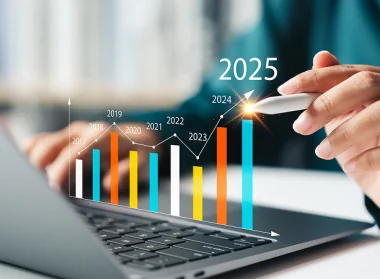What is ESG Procurement?
ESG stands for environmental, social and governance. These issues are important for all businesses, especially in the wake of the pandemic. Over the last two years, many events have affected all of us, both in our private and in our professional lives.
And we’re not just talking about COVID. In addition to social and political change, businesses have also dealt with extreme weather and climate change issues. As a result, we had to think about why and how we do what we do. We’ve had to stop traveling as much, often while handling our own child care, and to deal with numerous supply chain shortages and wander lead times.
How these events have affected our society shows that the world is volatile, uncertain, complex, and ambiguous (VUCA). globalization has intensified all of this. As the world economies, populations, and cultures have become interdependent on one another, we have inadvertently created the perfect conditions for catastrophe.
Our activity is the primary cause for all of this and by spending years letting things continue to be how they’ve always been in the past, we are paying for it. If we change our focus do the work involved in the procurement function and the role it plays, we see that many companies harmed themselves when it comes on when it came to covid-19 operations. Many supply chains were and still are incredibly dependent on a small supplier base.
And as everyone races to become as efficient as possible, inventory was at the lowest possible level, if it even existed at all, thanks to just-in-time processes. All of these factors created a near-zero tolerance for disruptions by suppliers and in transportation, especially on the global scale.
The good news is that it’s not too late to make things different. If we treat these conditions as a wake-up call, we can take action to prevent issues in the future. That said, many changes have to happen across an organization with the aim of decreasing the likelihood and severity of events like the ones we’re currently living in.
Taking action today to create a more sustainable future for us and the generations that follow is the only way to be successful with these initiatives.
If you want to create a tangible, long-lasting, and meaningful effect, here alone isn’t enough. many businesses often approach sustainability only by looking at user bottom-line projections to react defensively. The real chance of success comes when we start to use an offensive approach.
Sustainability isn’t just about spending money. It‘s also about value creation, which supports revenue growth. Today’s customers are more concerned about corporate social responsibility than ever before. If your team isn’t doing due diligence as part of the supplier selection process and works with suppliers that have poor ESG performance, it could damage your brand.
Sustainability Framework
The idea of sustainability comes from 1987 when the World Commission on Environment and Development published a report about sustainable development. The report says that “the exploitation of resources, the direction of investments, the orientation of technological development and institutional change [have to be] consistent with future as well as present needs.”
To achieve this goal, the World Commission on Environment and Development built the sustainability framework, the 3Ps of Sustainability, based on three core areas: the economy, society, and the environment.
What are the 3Ps of Sustainability?
Planet
These are actions that relate to reducing the environmental impact your business makes. This could be using renewable energy, reducing the emissions your operations produce, sourcing as locally as possible to minimize the impact on natural ecosystems, and so on.
People
This refers to all people, not just your employees, that are affected by business operations. While it factors in things like benefits of working conditions, education, and so on, it goes beyond the people who work for you to include your suppliers, customers, and even the local communities that everyone is part of.
Profit
This encompasses any and all economic value an organization generates. It’s about more than just the revenue it generates for itself but also what it brings to the environment and society in general.
According to the 3Ps, any human activity will either create or destroy value for a variety of stakeholders including primary and secondary stakeholders.
Primary stakeholders are the ones that are directly related to a company’s activity. They include suppliers, investors, employees, and customers. Secondary stakeholders are those that are indirectly impacted and indirectly influence the organization. They include Society in general, the environment, and any community connected to primary stakeholders. These include the media and government.
Addressing sustainability in a business requires people to change their perspectives. Most organizations play synthesis on their primary stakeholders, but secondary stakeholders should also have a voice.
How Procurement Impacts Sustainability
Changing perspective means assessing the true cost and benefit of activity by looking at things from the big picture. Consider how that activity impacts all stakeholders whether they be primary or secondary.
Research has shown that a company’s largest impact comes from the supply chain. That means procurement majorly influences a business’s social value. It explains why human rights (working conditions, paid paternity leave, etc.) and environmental impact get more attention and compete with what we consider traditional value drivers such as price and quality. That’s why companies need to start thinking about return on investment with sustainability practices built-in – or S-ROI.
S-ROI approaches consider any external intact impacts you must think about. For a broader ecosystem to have benefits, you must create a cycle in the value and supply chain. The demand for sustainable products and services increases is a reflection of buying decisions. This forces the downstream supply change to also look into more sustainable business practices. When this happens you get:
- Improved shared resource management
- Increased revenue in the local economy
- More resilience in the overall ecosystem
To achieve these benefits at your organization, you must implement sustainability in all areas of your procurement system – across people, processes, and technology. We’ll skip over the obvious obstacles like data and culture to highlight:
- Awareness: Sustainability and many areas within it are new topics. Because of this, they don’t have a structured method to account for the impacts it’s made of. It’s vastly different from the traditional profit-and-loss framework that is standardized across industries.
- Workload: Today’s procurement teams already have a ton of work to do. Sustainability adds to increasingly busy agendas and makes prioritization more difficult.
- Scale: Sustainability needs to be part of the end-to-end product life cycle and supply chain. This can be difficult to implement, measure, and manage.
- Scope: Sustainability affects every procurement activity across all procurement processes.
How to Get Started with Sustainable Procurement
At the top level, translating S-ROI into procurement seems like it would be the best approach with a continuous improvement methodology, like DMAIC or Six Sigma. The problem is that when companies dig deeper, they find it isn’t quite that simple. Since it covers multiple domains and subdomains while touching on every procurement activity, it can be overwhelming and hard to know where to start. when you consider that this approach requires a ton of data and highlight specific data at that to find insights that can be converted into action, it’s no surprise that many organizations find themselves paralyzed.
There isn’t a magic answer. What works for one organization may or may not work for another. You have to tailor your ESG strategy to your industry and to your specific business. So, what can you do to build sustainability into procurement? Break your sustainability strategy down into three phases: Buy-in, Scope and Priorities, and Implementation.
Buy-In
At this phase, you need to identify your primary and secondary stakeholders based on the concept of an ecosystem and value chain. You’ll need to assess your stakeholder’s expectations with respect to the dimensions of sustainability you’re trying to achieve. You want to give all stakeholders a chance to share their thoughts. From there, look at the overall company strategy and vision on sustainability, and tie it all together.
Scope
Once you have support from your stakeholders establish your baseline. This makes it easier to spot opportunities and gaps across your supply chain and product or service design. Look at your current impact and footprint. Use benchmarks and any publicly available data to reduce the amount of data you need to collect as you build your baseline.
Then, assess how viable and how feasible each of the opportunities are. Map your stakeholder expectations to you are product or service requirements and choose the areas you want to focus on. Spend time reviewing how ready you are to execute these initiatives. Consider the people, processes, technology, and what you need to make it happen. Consider tailoring your approach to the category or regional level if taking an initiative company-wide is not a current option.
It may be beneficial to bring in a consultancy to help you further understand what’s involved, and help you decide where to set your ESG targets.
Implementation
Put in place guidelines, policies, and incentives both internally and externally where necessary to execute your initiative. Work to educate and evangelize with your employees but share the news with suppliers as well. Demonstrate how it helps financially, environmentally, and makes things easier for your staff.
Keep an eye on the data to check progress on your ESG goals and monitor metrics for when adjustments may be necessary. Continue working through your sustainability initiatives on your ESG agenda so that you can integrate them at all key decision-making points.




